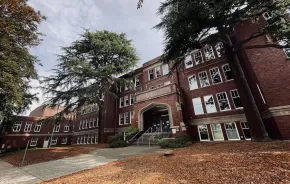
A summer low tide on Puget Sound is something else. The water scrolls away from a high-tide line marked by frizzled nests of dried seaweed, exposing an impossibly broad beach studded with rocks, barnacle-encrusted pier pylons and the occasional piece of rusting machinery. You want to follow the retreating shoreline into a landscape that only a few hours ago was covered under many feet of inhospitably cold water, because it’s not a place where you normally belong. You sense that there might be something to be found here, and you’re right. But the most interesting finds on a Puget Sound beach at low tide are ones that you’ll have to bend down to see -- and you can’t take one home in your pocket.
An inter-tidal universe
“One of the special things about Puget Sound is that we have pretty extreme tides,” notes Kathy Fletcher, founder and executive director of the nonprofit conservation organization People for Puget Sound. “There’s a 15-foot difference between high and low tide. When you get down to the super low parts of the beach, what you find are a lot of invertebrates, literally thousands of species.”
Even the most urban of Seattle beaches are home to this wild richness of inter-tidal marine life, according to Fletcher: sea stars and glistening green anemones, crabs aplenty, shrimp and worms of all types, and the occasional squid or octopus. “Every rock is its own little ecosystem, covered with barnacles and chitons and lots of different things,” she says. “A lot of it is quite miniature and it’s especially fun with your kids.”
It is especially fun with the kids, and you don’t have to rely on a field guide to make sense of what you see. Visit one of eight area beaches on selected days this summer from June through August, and you’ll be able to enlist expert identification help — and find out how you and your kids can protect and preserve the vulnerable creatures exposed at low tide. The Beach Naturalist program, co-sponsored by the Seattle Aquarium, People for Puget Sound, and several local and state government agencies, puts well-trained volunteers on the beach during summer low tides. “People may have the best of intentions while being on the beach and exploring,” says Beach Naturalist Coordinator Janice Mathisen. “But sometimes the best of intentions are hard on the beach. So the naturalists are there to answer questions and to talk to folks who are interested.”
Science at kids' level
And are they ever interested. On any given low tide, you’ll find naturalists, wearing vests and rubber boots and packing field guides, surrounded by crowds of kids peering into a bucket or crouched over a tide pool. They find a translucent amber lion’s mane jelly or the rubbery egg case of a moon snail and lead the naturalist over for identification. It’s exciting. Here’s an adult who’s interested and can tell them all about it. It’s science at kid level: Watch. Wonder. Think. Ask. Identify.
Instead of flipping rocks over and abandoning them next to a watery hole, naturalists show kids how to gently look under rocks and then turn them over to their original position. “We’re there to try to model how to look for things,” Mathisen says. “Some folks love to flip over those big rocks, but a rock is like an apartment building with different residents on different floors. If you flip them over, some residents are going to be crushed, and if you leave them there, some residents on the top are going to be killed.”
Those might sound like sobering words for a carefree day at the beach, but an essential part of a child’s education in this highly populated region is learning how to enjoy fragile spaces without destroying them. “It’s important to know that you can explore and enjoy without … touching or crushing” beach life, emphasizes Fletcher. The parts of an ecosystem are intricately fitted together, with each part affecting the other, and this knowledge doesn’t spoil the experience — it’s powerful. “If kids are running around with crabs in buckets, we talk a lot about it may not look like a home to you, but it would be like picking us up and dropping us in South Dakota,” Mathisen laughs. “The crabs really do have a home and a territory, so it’s really great to look at them and enjoy them and put them back right where you found them at the time so you’re not disrupting their whole system.”
Kris Collingridge is ParentMap’s Out & About editor.
5 great Puget Sound beaches for low tide fun
Although Mathisen cautions that you don’t know what you’re actually going to find on the beach, she offers a few ideas for parents that are eager to visit a new stretch of sand:
1. Seahurst Park in Burien offers a playground area, restrooms and three-quarters of a mile of beach from one end to the other.
2. Beach Park in Des Moines isn’t as diverse as the others, but it has “amazing tide pools … just boiling with activity.” There are restrooms and a playground.
3. Lincoln Park in West Seattle offers swings, a waterfront path and a playground.
4. South Alki Beach in West Seattle only has a portable toilet, but is a diverse beach with many creatures in a small area.
5. Richmond Beach in Shoreline doesn’t have a lot of slope to the beach, so when the tide comes in, it covers the beach quickly. Don’t arrive toward the end of the low tide.
Seattle marine science programs for kids
For kids’ activities and information on family-friendly beach activities sponsored by People for Puget Sound.
Find out more information about the Beach Naturalist Program on the Seattle Aquarium website.
Seattle Aquarium's beach etiquette tips for kids
1. Running feet can harm animals and destroy delicate habitat.
2. Picking up or rolling over rocks crushes animals and destroys habitat.
3. Taking rocks, wood or shells harms habitat by taking potential homes away from the beach.
4. Garbage left on the beach can entangle and kill animals.
5. Enjoy looking at the animals where you find them, and leave them where you find them.
6. Touch animals gently with one wet finger.
7. The beach is home to many animals and algae, from tiny snails to large sea stars, from rockweed to kelp. They can’t protect themselves from careless visitors, but you can!











